Helsinki Travel Guide
The average temperature in efficient, elegant Helsinki hovers around 43F (6C), but this does not mean visitors need expect a chilly welcome. The funky Finns, known for their hip and happening sense of style, design and association with high technology, know how to warm hearts and minds in their modern, cosmopolitan capital.
The city, spread across a cluster of promontories and peninsulas, is almost 500 years old. Its clean, wide avenues are lined with buildings echoing centuries of architectural excellence from Gothic through Art Deco to cutting-edge contemporary. It all fits together in total harmony with nature, which invades the urban environment with green spaces when it is not blanketed in snow. Trees, flowers, hares, squirrels, pheasants and even the odd elk are often spied in the myriad parks in the centre of the city. On the whole, the city is surrounded with crisp, unpolluted air and the bright blue waters of the Baltic Sea.
Despite the cold climate, the invigorating outdoors beckons in Helsinki even in the middle of winter. Recreation takes the form of ice skating, skiing, ice-fishing, sailing, cycling, soaking in saunas, or during the short-lived summer, sunbathing. After the action, sit tucked in a rug outside one of the many street-side bars sipping hot (spiced wine) and watch the wintry world go by. The city is also ideal for walking, with the sights all concentrated in the central area beneath the towering cathedrals.
The great outdoors is also the setting for Helsinki's numerous festivals and fairs, such as the May Day Carnival, the Baltic Herring Festival, the Helsinki City Marathon, the annual Samba carnival and the midsummer festival, to name but a few. Events do move indoors when it comes to the city's rich cultural life, featuring some of the world's finest orchestras and choirs, rock concerts, film festivals, the Finnish National Opera and Ballet performances, and the output of countless theatre and dance troupes.
Whether visited as a snowy winter wonderland or scenic sun-splashed cityscape with almost permanent daylight, Helsinki is a unique destination that will delight the heart of any traveller.
Things to do in Helsinki
Straddling islands and lapped by the Baltic Sea, Helsinki is a uniquely attractive and interesting city to visit. Many travellers choose to enjoy the sea air and enjoy the walk along the seaside which covers around four miles (7 km), taking visitors along Lapinlahti Bay past sights like the Sibelius Monument, Seurasaari Open-Air Museum, Hietaniemi Beach, a mini golf course and Mäntyniemi, one of the official residences of the President of Finland. The best time to enjoy this stretch of coastline is on a warm summer's day.
Visit the old Swedish fortress of Suomenlinna, admire the engineering genius of the Temppeliaukio Church (Church in the rock), have your picture taken in front of the Uspenski Cathedral or sip on a cup of coffee while you watch the world go by in neoclassical Senate Square. More active visitors should hire a bike and make their way around this picturesque city as it has an impressive network of bicycle routes.
There are many things for kids to do in Helsinki, including visiting the Helsinki Zoo on Korkeasaari Island or the interactive Heureka Science Centre. There are many parks in Helsinki that offer space to run around in, with Sinebrychoff Park being popular in the wintertime for sledding. Pihlajasaari Recreational Park has a nice beach, but look carefully where you go, as some areas are designated for nudists.
Travellers should look into buying the Helsinki Card which entitles the bearer to unlimited free travel on public transport within the Helsinki area, free admission to a number of the city's attractions, and provides discounts on restaurants and other activities around Helsinki. Helsinki Cards are available for 24, 48 or 72 hours and prices start from EUR 46 for adults.
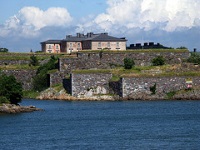
Suomenlinna Fortress
The historically significant Suomenlinna Fortress is not only a major military monument worthy of the UNESCO World Heritage List, but also home to about 800 Finns who live in the renovated barracks. The entire site is a fun, multifaceted attraction for Helsinki residents and visitors. Built during Swedish rule in the 18th century, the fortress is situated on an island at the entrance to Helsinki's harbour. The fortification became a strategic military shipyard with one of the biggest dry docks in the world, comparable to the fortress at Gibraltar. Apart from admiring the architecture, there is plenty to experience at Suomenlinna, which contains six museums, galleries, restaurants, cafes, several parks, beaches, and nature areas. Guided walking tours are offered and there are always events taking place like exhibitions, jazz shows, and theatrical performances, particularly during summer.
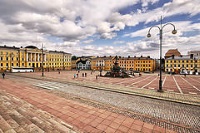
Senate Square
Architecture buffs will enjoy sitting in a cafe admiring the buildings surrounding Helsinki's lively Senate Square, renowned for some of Europe's finest examples of the neoclassical style. But visitors don't need any knowledge of architecture to enjoy this lovely square, which has a great atmosphere and is one of the central meeting places of the city. The square is dominated by the city's main landmark, the Lutheran Cathedral, designed by Carl Ludwig Engel and consecrated in 1852. The interior is as perfect as the exterior design, and is open to the public daily for no charge. Other buildings on the Square designed by Engel are the Government Palace, completed in 1822, and the University buildings, completed by 1832. The square is a thrilling place to be on New Year's Eve as this is where the locals come to celebrate with singing, dancing, and brilliant fireworks displays. There are bus and walking tours of Helsinki departing from the square, which is a good starting point for exploration of the city.
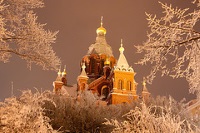
Uspenski Cathedral
Many have compared Helsinki to the beautiful Russian city of St Petersburg, a close neighbour across a strait of water. The exotic redbrick Uspenski Cathedral cements the Russian connection, designed by Aleksei Gornostayev of St Petersburg in the mid-1800s. The ornate cathedral sits atop a rocky outcrop on the Katajanokka Peninsula opposite the fish market, fronted by a statue of Tsar Alexander II as a memento of Russia's occupation of Finland until 1919. The magnificent Byzantine edifice is topped with a characteristic golden onion dome, and the interior is opulently decorated with valuable icons. The cathedral is beautifully situated and very eye-catching, as it can be seen from many places in the city. There are wonderful views of Helsinki from the hill. Parts of the church are off-limits when there is not a service being conducted but there is still plenty to see. Flash photography is not allowed inside.
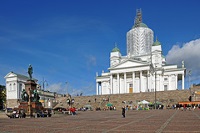
Market Square
Known locally as Kauppatori, the Market Square in Helsinki is the central meeting point of the city. The space is sandwiched between the sea and a row of impressive historic buildings which include the City Hall, the Swedish Embassy, and the Presidential Palace. Trams and waterbuses converge on the square, where visitors gather to watch the changing of the guard at the palace and admire the Havis Amanda mermaid statue at the west end of the Square in front of Esplanade Park. There is a longstanding tradition of displaying old American cars in the square on the first Friday of every month, which is fun for motor enthusiasts. The square is also a departure point for the ferries that travel to Suomenlinna, and it is possible to hire private vessels for sailing trips out to other nearby islands in summer. The Baltic Herring Festival occurs every year in October, serving as the oldest recurring festival in Helsinki. It's a particularly good time to visit as lots of food and craft stalls spring up in the square, with plenty of herring to sample. Seagulls have become something of a menace in the Market Square, swooping down to snatch food of all kinds from the hands of unsuspecting tourists.
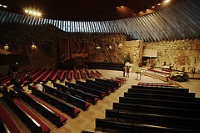
Temppeliaukio Church
An awesome and unique piece of architecture, the Temppeliaukio (Church in the Rock) was designed by brothers Timo and Tuomo Suomalainen and carved out of solid granite as recently as 1969. It has become one of Helsinki's most famous attractions, its rock walls roofed over with a massive concave copper ceiling, which gives it excellent acoustics and makes the roof seem like an enormous sun. From the outside, it still feels like part of the rock that surrounds it. The interior is magnificent and quite the opposite of the dark cave one would expect when looking at the rock-hewn building. It is an unusual place of worship but clearly a spiritual attraction and, no matter what a visitor's beliefs are, this artistic church will surprise and perhaps inspire them. The church is often used as a venue for musical events due to its wonderful acoustics and there are sometimes piano recitals in the afternoons; if travellers visit during one of these performances, they can leave a donation to show their appreciation. English services are occasionally conducted on Sundays at 2pm.
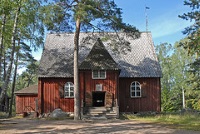
Seurasaari Open Air Museum
The Seurasaari Open-Air Museum allows visitors to step back in time and glimpse the traditional way of life in the Finnish countryside, and all this in the heart of the capital city, Helsinki. Situated on a lovely green island accessed from the mainland via a footbridge, the museum consists of a collection of cottages, farmsteads, rural churches, manor houses, and other old buildings, all preserved and relocated from their original sites around the provinces of Finland. The 87 buildings currently on the museum site have been arranged to form a complete replica of a country district, reflecting what life was like in various levels of rural society between the 18th and 20th centuries.
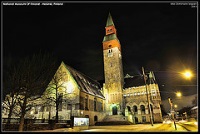
National Museum of Finland
History enthusiasts will enjoy the National Museum of Finland in Helsinki, which depicts Finnish life from prehistoric times to the present. Housed in an impressive Romantic-style building, it looks a bit like a castle. The museum's permanent exhibition is divided into different sections: the Treasure Trove, which is a display of coins, medals, and weaponry, while the archaeological section features some rare Stone Age finds. In addition, the cultural heritage collection displays folk costumes, textiles, and furniture. The Workshop Vintti offers an exciting interactive approach to history, letting visitors sit on a throne, saddle a horse, or build an authentic Finnish wall. Other highlights include the section on the Vikings and the exhibition on jewellery through the ages in Finland. One common criticism of this otherwise popular museum is that there is not adequate coverage of the Finnish wars, which may be a disappointment to military history lovers. The museum has regular temporary exhibitions as well as the extensive permanent collection but these usually carry an extra cover charge. The rich history of the Finnish is relatively unknown to outsiders, which makes this museum especially intriguing. The museum also has a cafe and shop.
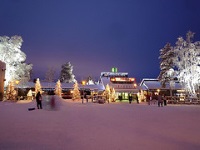
Santa Claus Village
Santa Claus Village is a popular daytrip from Helsinki via trains to Rovaniemi. Every day is Christmas in this rather commercialised but still quaint Lapland hideaway of northern Finland. Here, Mr Claus spends his time preparing gifts for the world's children and meeting and greeting an estimated 500,000 delighted visitors a year. Coincidentally, the valley inside the Arctic Circle where Santa's Village is set is shaped like an ear, so it is said that Santa can listen to all kids across the planet. All sorts of activities are on offer at the village, including a reindeer park, snow safaris, and Santa's personal post office, from which visitors can mail letters or cards home. There are beautiful Christmas decorations on sale, along with plenty of opportunities for present shopping. Santa Claus Village and Santa Park are located just a mile from the international airport of Rovaniemi (capital of Lapland), and is also accessible by bus or train from Helsinki.
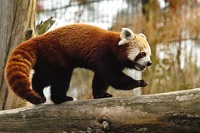
Helsinki Zoo
Situated on the popular island of Korkeasaari, the Helsinki Zoo is one of the best family attractions in Helsinki and can be reached by bus, car, or ferry during the summer. Home to about 150 different animal species and almost seven times that many varieties of plant life, the zoo makes a great stop for anyone travelling with children in Helsinki. The place is arranged in different habitats so that visitors move from one world to another through tundra, rainforest, mountains, wetlands, deserts, and tropics. Each season also presents visitors with different experiences, ranging from autumn when the big cats get more active to greeting the newborns in spring. Visitors can see Finnish wildlife such as musk ox, reindeer, and snowy owls, or more exotic flora and fauna from all over the world, including rare animals such as the majestic snow leopard and the red panda. As part of its mission to preserve and protect biodiversity, the Helsinki zoo breeds and raises endangered animals. The zoo, founded 120 years ago, also offers rest areas, restaurants, and souvenir shops, and visitors can bring their own picnic and enjoy it sitting on the cliff tops with lovely views.
Eating Out
With more than 800 restaurants to choose from, it is possible to find many international cuisines as well as places to sample tasty local food when eating out in Helsinki. Various restaurants on offer include steak houses, bistros, cafes, up-market gourmet establishments and fast food joints. Whatever else visitors may want to try though, the traditional Finnish food is a must.
Finnish food is generally quite healthy and simple, with an emphasis on fresh produce and some influence from Russian and Scandinavian cooking traditions. The local cuisine centres on seafood and many of the trademark meals are fish dishes. Fresh berries are also common on menus in Helsinki, often served with ice-cream or pastry. Lapland has its own distinct cuisine and its most famous staples are reindeer steak and snow grouse. The most common drink in Finland is vodka but, in Helsinki, it is also wonderful to sample the hot spiced wine called gloggi, especially in the winter.
The best areas to find restaurants in Helsinki include the central areas of Katajanokka and Kruununhaka as well as the city's main boulevard, the Esplanadi. The Hietalahti area is good for those eating on a budget, and the Kallio quarter is a fun clubbing area with cheap ethnic food and some good bars.
Shopping
Home to bustling market places, luxury boutiques and enormous department stores, shopping in Helsinki has its fair share of opportunities. They may not always be cheap, but the quality of the goods makes them worth their sometimes hefty price tags. Best buys in Helsinki include reindeer furs, Nordic wool, traditional wooden kitchen utensils and jewellery made out of Finland's national gemstone, spectrolite, which captures the magnificent blues and greens of the Aurora Borealis (Northern Lights). Visitors can also find liquors made from locally grown cloudberries, cranberries, and Arctic brambleberries that make unique and special Helsinki souvenirs. Itis in East Helsinki is one of the biggest shopping centres in Finland, where nearly 150 shops selling everything from clothing and shoes to sports equipment and cameras will keep travellers on their toes. The Sello shopping centre in Espoo in the west of the city provides a slightly less exhausting day of spending. The Stockmann department store on the Aleksanterinkatu, which has become somewhat of an institution in Helsinki, sells everything from electrical goods and clothing to make up and teddy bears. Shopping streets in Helsinki include Aleksanterinkatu, Eerikinkatu, Fredrikinkatu and Uudenmaankatu, where boutiques and specialist stores can be found. Market Square at the eastern end of Esplanadi is undoubtedly one of Helsinki's most popular tourist attractions and a great place to scoop up some souvenirs, especially during the spring and autumn months when vendors selling fresh Finnish produce, souvenirs and trinkets abound and the mix of Finns and international visitors make this vibrant market electric. Petrolheads should visit the market on the first Friday of the month, when a display of old American cars lines the seaside square, while October brings much excitement as the annual herring market festival takes place. Shops in Helsinki are generally open from 9am to 5.30pm from Monday to Friday, while on Saturdays, stores only stay open until 2pm and remain closed on Sundays.
Nightlife
Helsinki may be cold, but the pulsating nightlife is enough to get this city hot and sweaty. With a number of trendy nightclubs, bars and pubs, visitors will have no problem making full use of the long, dark winter nights. Most of the nightlife in Helsinki is centred round Uudenmaankatu and Eerikinkatu, where bars and clubs abound and crossing from one to the other is a quick dash across the cold street. Finns love their tango music too so visitors should expect to find plenty of sultry dancing in restaurants, bars and even the streets during the summer months, with a few of the favourite outdoor dancing spots nearby the Vantaa area.
Travellers should head to the stylish bars in Uudenmaankatu 9 for a night out with the local trendoids and mingle with the ultra-hip, while sipping on designer beers and nibbling on tapas. Eerikinkatu 27 is the place to be seen working up a sweat to local techno music and a few bars here are synonymous with the gay scene of Helsinki. While in Simonkatu there are megaclubs, with some boasting up to three storeys, six bars and hundreds of Helsinki's hottest people partying the night away. For live music, Telakkakatu 8 is where some of Helsinki's hottest new bands showcase their talents, while Mikonkatu 15 is great for those looking for a heavy rock gig and a little moshing for good measure.
For a more cultured evening, visitors can head to Finlandia Hall for the Helsinki Philharmonic Orchestra and other concert performances (this is the home of Sibelius after all). The Finnish National Opera performs regularly, and Helsinki's thriving jazz scene is personified in the UMO Jazz Orchestra, which plays at various venues around town.
Getting Around
Helsinki has a simple and extremely efficient public transport system, rated one of the best in Europe, making it easy to hop onto trams, buses, the metro or a ferry with a single ticket purchased from the driver, ticket machines or even the HSL mobile app. Special tourist tickets are available for visitors allowing for one, three or five days' unlimited use of the public transport system. There are also plenty of taxis available to be hailed, ordered by telephone or boarded at one of the many taxi ranks. A car in the easily navigable city of Helsinki poses no problems and it is easy to drive yourself around should you so desire. There are several car hire agencies available.
The city is compact and pleasant so that getting around on foot is an attractive option. Many of the most popular attractions are clumped together and can be easily navigated on foot. There are also many lovely parks to walk through. Alternatively, in summer make use of the hundreds of kilometres of bike trails by picking up a bicycle for a small coin deposit at one of the bike racks dotted around the city centre.
Helsinki Climate and Weather
Helsinki has a climate that is transitional between maritime and continental. Summers (June to August) are warm and bright, with average temperatures ranging from a cool 59°F (15°C) to 72°F (22°C) in the warmest month of July. Days are long and sunny, with up to 19 hours of daylight. Towards the end of September temperatures cool down drastically as days grow shorter, and by November the weather is at freezing point as the cold, snowy winter sets in. The city is blanketed by snow in winter (December to February), with temperatures plummeting well below freezing to the point where the sea itself freezes over, and it is never fully daylight. Spring arrives late, in early April. The best time to visit is in summer, which is also when many of the city's festivals happen. Spring can also be pleasant as the natural areas of the city come alive with flowers and new greenery. If you are planning a trip to Finland in winter, Helsinki will be very cold but is not without its comforts and attractions.
Finland travel info
Electricity
Electrical current is 230 volts, 50Hz. Standard European two-pin plugs are in use.
Language
Finnish and Swedish share status as Finlands official languages. Sami is spoken by an isolated population group in Lapland. English is taught at schools and is widely understood.
Money
The official currency of Finland is the euro (EUR), which is divided into 100 cents. Banks, ATMs and bureaux de change are available in all cities and airports; banks are closed on weekends. American Express, Diner's Club, Eurocard, Access, MasterCard and Visa are accepted in hotels, restaurants and larger shops. ATMs are the easiest and most economical way to get cash.
Tipping
Tips are not expected in Finland because a service charge is generally added to restaurant, bar and hotel bills, but customers often choose to round up the bill when paying in cash. Taxi drivers also appreciate any small change or coins that are added to round up the fare.
Health
There are no major health risks associated with travel to Finland, though everyone 12 years of age and older should get fully vaccinated for COVID-19 before visiting. EU nationals should ensure they have a European Health Insurance Card (EHIC), which entitles citizens to emergency medical treatment on the same terms as Finnish citizens. Comprehensive travel insurance is advised. After Brexit, the Global Health Insurance Card (GHIC) replaced the European Health Insurance Card (EHIC) for UK citizens. The GHIC allows UK citizens access to state healthcare during visits to the EU. The GHIC is not valid in Norway, Iceland, Liechtenstein or Switzerland, nor is it an alternative to travel insurance.
Safety
Crime levels are low in Finland and visitors can be assured of a trouble-free vacation. Drug offences and drinking and driving are dealt with very harshly. The main danger in the country is driving during the winter months, when icy roads are a hazard and cars must be fitted with snow tyres.
Local customs
The sauna is a Finnish way of life, so they are extremely popular. Words are taken seriously in Finland and people are held to what they say, so visitors should be sure of what they're saying before they speak.
Doing business
Business is conducted formally in Finland. A formal, understated sense of dress is important and being late is considered rude. Appointments should always be made and confirmed; meetings are often strictly business and are rarely over lunch. Finns do not require a strong relationship prior to doing business, with deals often taking place over the phone, fax, and via e-mail. However, the sauna is an important part of the culture and it is not unusual for business to be discussed in this environment if negotiations ever take place on a more sociable level.
Finns are very direct and prefer getting straight to the point; a verbal agreement may hold. Business cards are exchanged at meetings and should have, on the alternate side, details in Finnish. Business hours are generally 8am to 4pm Monday to Friday.
Duty free
Travellers arriving from the EU can enter Finland without restrictions on the quantity of purchases, provided they have been bought in the EU for personal consumption or as gift items. No restrictions are placed on meat and dairy products; some restrictions may apply to selected tobacco products. Travellers over 20 years arriving from non-EU countries are allowed to bring in the following items without incurring customs duty: 200 cigarettes, or 100 cigarillos, or 50 cigars, or 250g of tobacco. They can also bring in one litre of spirits with maximum 22 percent alcohol content, or two litres of alcoholic beverages not exceeding 22 percent alcohol content, as well as four litres of wine and 16 litres of beer.
Communications
The international country dialling code for Finland is +358. Free WiFi is available in hotels, cafes, restaurants, and similar establishments in all major towns and cities. There are free WiFi hotspots with high speed internet in Helsinki.
Passport & Visa
The borderless region known as the Schengen Area includes the following countries: Austria, Belgium, Czech Republic, Denmark, Estonia, Finland, France, Germany, Greece, Hungary, Iceland, Italy, Latvia, Lithuania, Luxembourg, Malta, The Netherlands, Norway, Poland, Portugal, Slovakia, Slovenia, Spain, Sweden and Switzerland. All these countries issue a standard Schengen visa that has a multiple entry option, and which allows the holder to travel freely within the borders of all the aforementioned countries. It is highly recommended that travellers' passports have at least six months' validity remaining after the intended date of departure from their travel destination. Immigration officials often apply different rules to those stated by travel agents and official sources.
Entry requirements
US citizens must have a passport that is valid for three months beyond the period of intended stay in Finland. A visa is not required for a stay of up to 90 days in a 180 day period.
British passports endorsed 'British Citizen', 'British Subject' (containing a Certificate of Entitlement to the Right of Abode issued by the United Kingdom), and 'British Overseas Territories Citizen' issued by Gibraltar, only need to be valid for period of intended stay in Finland. All other endorsements require at least three months validity beyond the period of intended stay in Finland.
A visa is not required for passports endorsed 'British Citizen', 'British Subject' (containing a Certificate of Entitlement to the Right of Abode issued by the United Kingdom), and 'British Overseas Territories Citizen' issued by Gibraltar. No visa is required for stays of up to 90 days in a 180 day period for holders of passports with any other endorsement.
Holders of identity cards issued by Gibraltar authories, and endorsed 'Validated for EU travel purposes under the authority of the United Kingdom', do not require a visa to visit Finland.
Canadian citizens must have a passport that is valid for three months beyond the period of intended stay in Finland. A visa is not required for a stay of up to 90 days in a 180 day period.
Australian citizens must have a passport that is valid for three months beyond the period of intended stay in Finland. A visa is not required for a stay of up to 90 days in a 180 day period.
South African citizens must have a passport that is valid for three months beyond the intended period of stay, and a valid Schengen visa, to enter Finland.
Irish citizens must have a passport that is valid on arrival. No visa is required.
New Zealand citizens must have a passport that is valid for three months beyond the period of intended stay in Finland. A visa is not required for a stay of up to 90 days in a 180 day period.
Useful contacts
Helsinki Tourist Information, Helsinki: +358 (0)10 3101 3300 or www.visitfinland.com
112 (General)Embassies / consulates in other countries
Embassy of Finland, Washington DC, United States: +1 (0)202 298 5800
Embassy of Finland, London, United Kingdom: +44 (0)20 7838 6200
Embassy of Finland, Ottawa, Canada: +1 (0)613 288 2233
Embassy of Finland, Canberra, Australia: +61 (0)2 6273 3800
Embassy of Finland, Pretoria, South Africa: +27 (0)12 343 0275
Embassy of Finland, Dublin, Ireland: +353 (0)1 478 1344
Consulate-General of Finland, Wellington, New Zealand: +64 (0)4 924 3416
Embassies / consulates in Finland
United States Embassy, Helsinki: +358 (0)9 616 250
British Embassy, Helsinki: +358 (0)9 2286 5100
Canadian Embassy, Helsinki: +358 (0)9 228 530
Australian Embassy, Helsinki: +358 (0)10 42 04 492
South African Embassy, Helsinki: +358 (0)9 6860 3100
Irish Embassy, Helsinki: +358 (0)9 682 4240
New Zealand Embassy, The Hague, Netherlands (also responsible for Finland): +31 (0)70 346 9324



